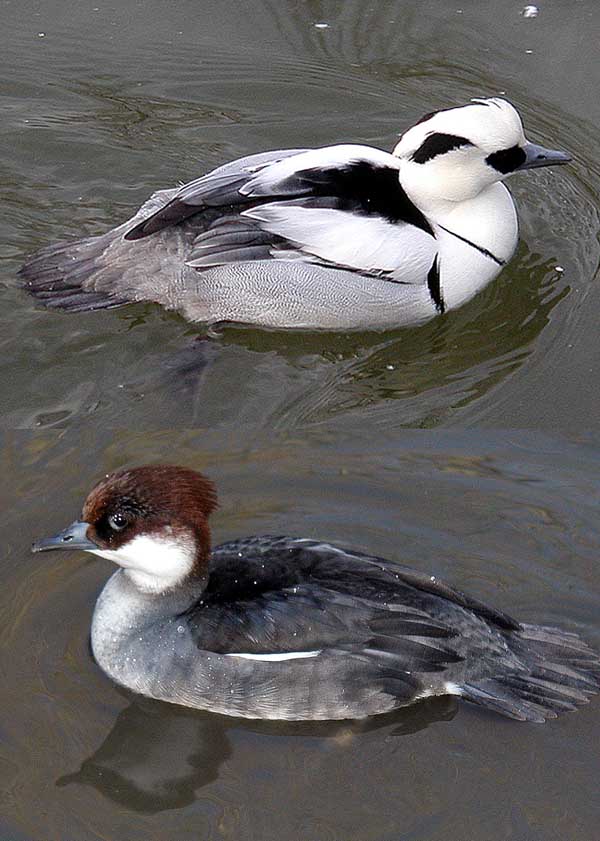|
| Query: great white | Result: 481st of 746 | |
Smew (Mergellus albellus) - Wiki
| Subject: | Smew (Mergellus albellus) - Wiki
| |

| Resolution: 600x841
File Size: 83893 Bytes
Date: 0000:00:00 00:00:00
Camera: C3100Z,C3020Z (OLYMPUS OPTICAL CO.,LTD)
F number: f/2.8
Exposure: 10/1000 sec
Focal Length: 191/10
Upload Date: 2007:01:13 19:22:06
|
Smew
From Wikipedia, the free encyclopedia
[Photo] Male (top picture) and female Smew at Slimbridge Wildfowl and Wetlands Centre, Gloucestershire, England. "I don't want to pretend these two posed so prettily. I joined two pictures, the join line is easy to see." Taken by Adrian Pingstone in January 2004 and released to the public domain.
The Smew (Mergellus albellus) is a small duck which is intermediate between the mergansers and the goldeneyes, and has interbred with the Common Goldeneye. It is the only member of the genus Mergellus (Selby, 1840).
Appearance
The drake Smew, with its 'cracked ice' appearance, is unmistakable, and looks very black-and-white in flight. The females and immature males are grey birds with chestnut foreheads and crowns, and can be confused at a distance with the Ruddy Duck; they are often known as "redhead" Smew. It has oval white wing-patches in flight. The Smew's bill has a hooked tip and serrated edges, which help it catch fish when it dives for them.
Habitat
This species breeds in the northern taiga of Europe and Asia. It needs trees for breeding. The Smew lives on fish-rich lakes and slow rivers. As a migrant it leaves its breeding areas and winters on sheltered coasts or inland lakes of the Baltic Sea, the Black Sea, northern Germany and the Low Countries, with small number reaching Great Britain, mostly at regular sites. On lakes it prefers areas around the edges, often under small trees.
Behaviour
The Smew breeds in May and lays 6-9 creme-colored eggs. It nests in tree holes, such as old woodpecker nests. It is a shy bird and flushes easily when disturbed.
The Smew is one of the species to which the Agreement on the Conservation of African-Eurasian Migratory Waterbirds (AEWA) applies.
http://en.wikipedia.org/wiki/Smew
| The text in this page is based on the copyrighted Wikipedia article shown in above URL. It is used under the GNU Free Documentation License. You may redistribute it, verbatim or modified, providing that you comply with the terms of the GFDL. |
|
^o^
Animal Pictures Archive for smart phones
^o^
|
|

